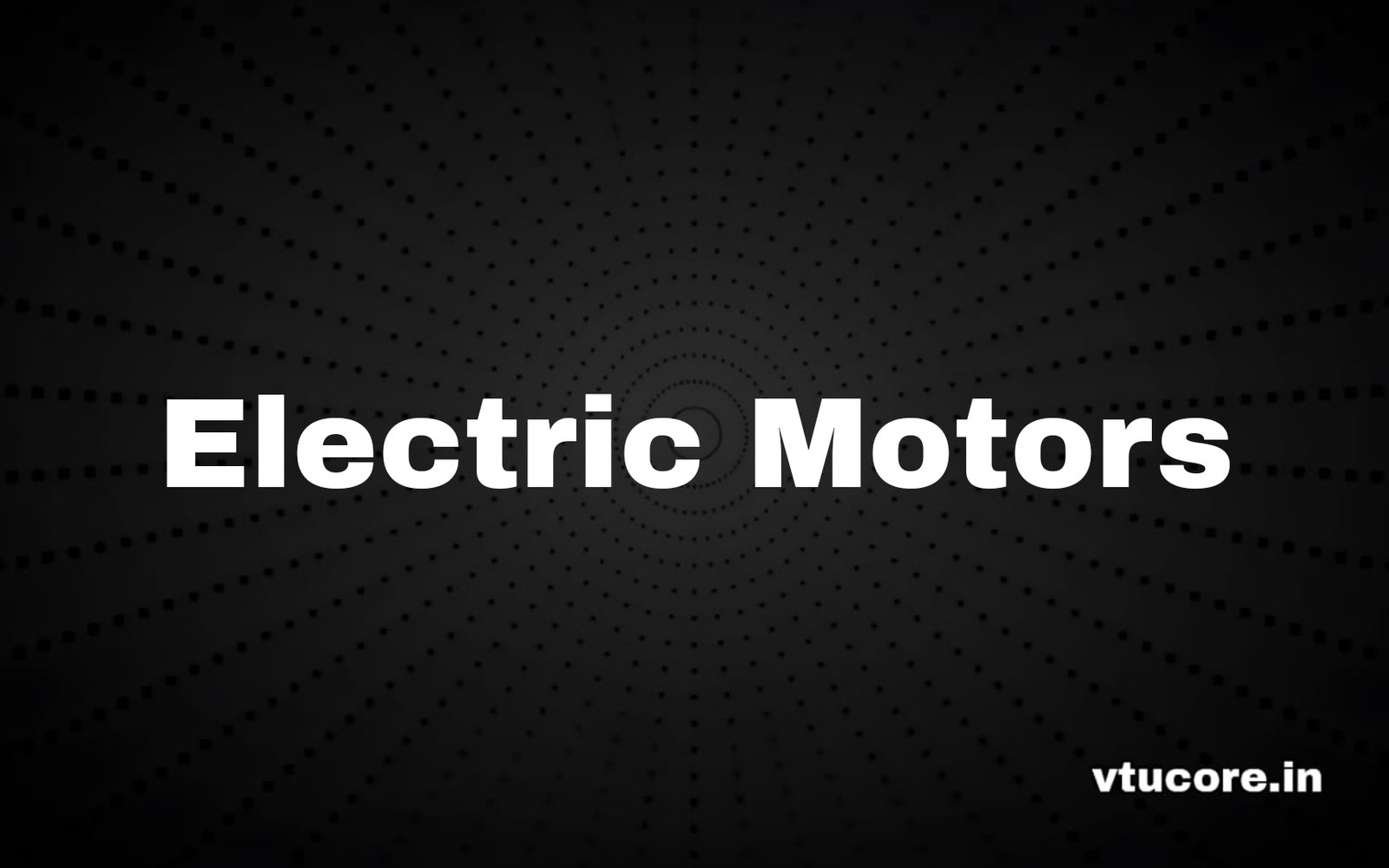ELECTRIC MOTORS BEE401
Course Code: BEE401
Credits: 03
CIE Marks: 50
SEE Marks: 50
Total Marks: 100
Exam Hours: 03
Total Hours of Pedagogy: 40H
Teaching Hours/Weeks: [L:T:P:S] 3:0:0:0
DC Motors: Construction and working principle. Back E.M.F and its significance, Torque equation, Classification, Characteristics of shunt, series & compound motors, Speed control of shunt motor, Application of motors.
Losses and Efficiency– Losses in DC motors, power flow diagram, efficiency, condition for maximum efficiency.
Testing of DC Motors: Direct & indirect methods of testing of DC motors- Swinburne’s test, Field’s test, merits and demerits of tests.
Three Phase Induction Motors: Concept and generation of rotating magnetic field, Principle of operation, construction, classification and types; squirrel-cage, slip-ring. Slip and its significance, Torque equation, torque-slip characteristic covering motoring, generating and braking regions of operation, Maximum torque, (numerical as applicable)
Performance of Three-Phase Induction Motor: Phasor diagram of induction motor on no-load and on load, equivalent circuit, losses, efficiency, No-load and blocked rotor tests. Performance of the motor from the equivalent circuit. Cogging and crawling. High torque rotors-double cage and deep rotor bars. Induction motor working as induction generator, construction and working of doubly fed induction generator. (numerical as applicable)
Starting and Speed Control of Three-Phase Induction Motors: Necessity of starter. Direct on line, Star-Delta, and autotransformer starting. Rotor resistance starting. Speed control by frequency.
Single-Phase Induction Motor: Double revolving field theory and principle of operation. Construction and operation of split-phase, capacitor start and capacitor run and shaded pole motors. Comparison of single phase motors and applications. (numerical as applicable)
Synchronous Motor: Principle of operation, phasor diagrams, torque and torque angle, effect of
change in load, effect of change in excitation. V and inverted V curves. Synchronous condenser.
Other Motors: Construction and operation of Universal motor, AC servomotor, Linear induction motor, PMSM, SRM and BLDC.

